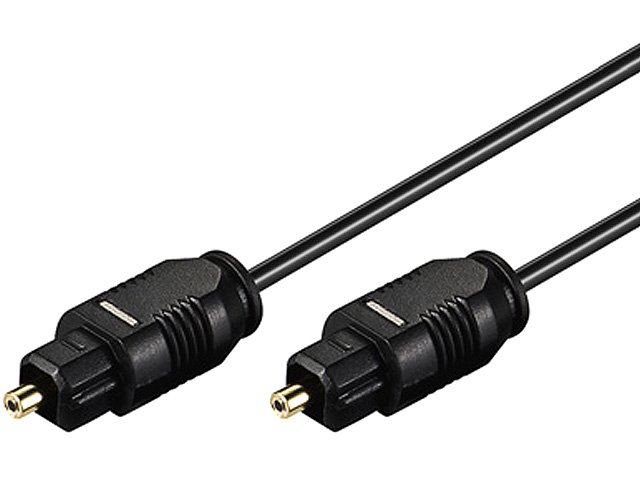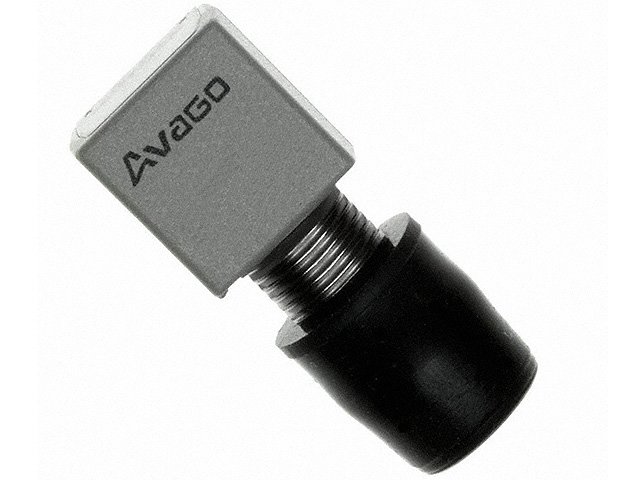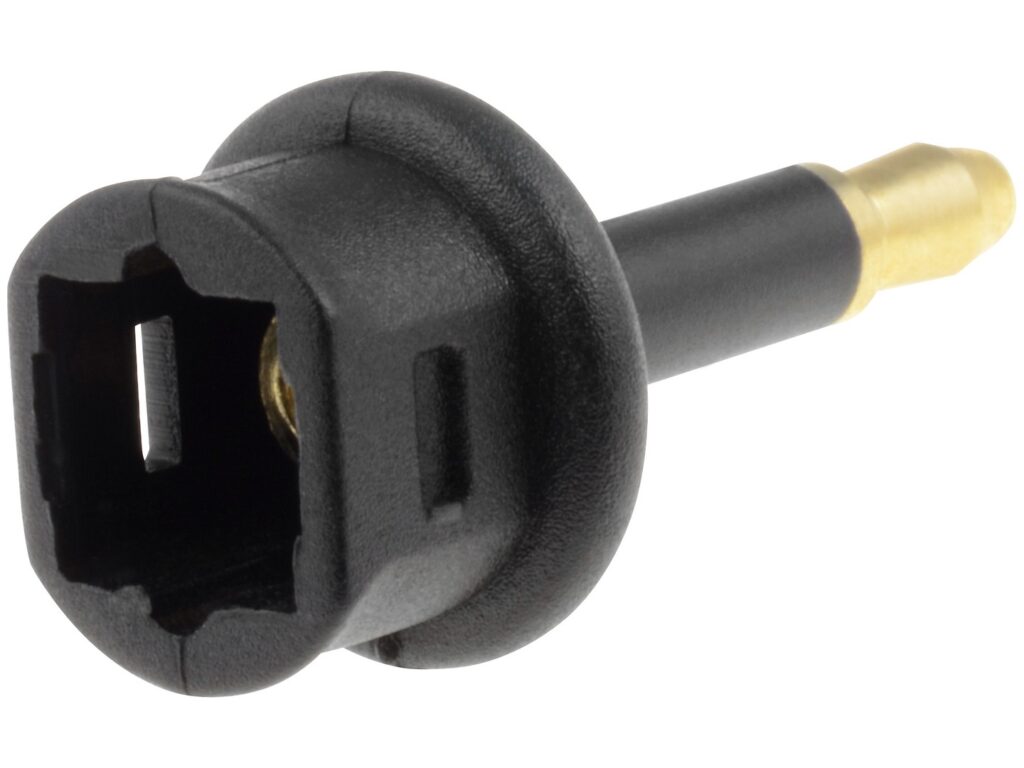Optical fibre cable is a type of cable in which the light wave is used for data transmission. Is there anything else you should know about it? Read this article to learn more.

Optical fibre cable utilizes the optical fibre located inside it. The physical properties of data transmission via a modulated light wave (instead of the electric current) prevent the disruption of the transmission caused by any external factors. Currently, such a solution is applied most frequently to digital data transfer of sound, images and other type of data. Is there anything else you should know about it? Read this article to learn more.
In this article you will find out:
- What is an optical fibre cable,
- What are the types of optical fibre cables,
- What are the applications of optical fibre cables,
- Which type of an optical fibre cable should you choose,
- How to connect an optical fibre cable,
- Should you choose an HDMI, optical or RCA cable,
- How much does an optical fibre cable cost.

What is an optical fibre cable?
Optical fibre cable is a type of cable in which the light wave is used for data transmission. Glass and plastic with very good optical properties are usually used to build the core – as opposed to the majority of currently used cables in which the electric impulse is responsible for data transmission and the core is most often made of an electrically conducting material. The fibre cable is made primarily of the dielectric fibres through which data are transmitted at high speed in the form of a complex light wave (beam of light). In this way, the transmitted data reach the target unmodified, so theoretically this type of data transmission is completely lossless.
The use of optical fibre cables guarantees that the transmitted signal is fully resistant to deformation caused by the weather conditions and impact of other electronic devices (electromagnetic interference) as well as low attenuation of the transmission. The quality of the signal is also unaffected by the distance – the properties of a functional optical fibre cable remain unchanged even if the distance between the beginning and the end of the cable is multiplied. Another advantage of an optical fibre cable is a total absence of electromagnetic influence on the nearby devices and the lack of potential differences in the cable.
Types of optical fibre cables
Optical fibre cables can be divided according to the material (glass, plastic, semiconductor), geometry (waveguide, strip, fibrous), mode structure (single and multimode fibres), distribution of the refractive index (step-index, gradient-index) and standard of the connection.

Geometry of the optical fibre cable
The waveguide has three layers. The inner layer has the highest refractive index, and thanks to the total internal reflection he light is confined in this layer. A strip optical fibre cable allows the propagation of the beam in two separate directions, whereas a fibrous optical cable has a core made of many independent fibres.
Material
The most effective cable is the glass optical fibre that allows fast and long-distance data transmission. Cables with a plastic and semi conductive core are applied mainly in the local data transmission between devices.
Mode structure
Single and multimode fibres differ depending on the thickness of the core. In the case of a single mode fibre, its standard thickness is usually 8-10μm, and the light wave propagates in parallel (or almost in parallel) to the axis of the cable. The core diameter of the multimode fibre is usually 50 or 62,5μm, thanks to which multiple light waves can be propagated at the same time.
Distribution of the refractive index

Step-index optical fibres are characterised by a gradual variation of the refractive index between the core of the cable and its sheath, whereas in the case of gradient-index fibres this variation occurs uninterruptedly (a gradual variation from the highest value on the axis of the core to the lowest value on the border of the cable and its sheath).
Connector
Currently, the most popular types of optical fibre cables are the ones with a TOSLINK or Mini TOSLINK plug at the end.
TOSLINK
TOSLINK is an interface standard which allows to transmit a digital audio signal as a light wave, via an optical fibre cable with a diameter of approximately 1mm. It is applied in home theatres, computers, sound cards, video game machines and many other devices which are commonly used. TOSLINK was carefully designed and patented in 1983 by Toshiba, a well-known Japanese company. Actually, its name is derived from it: TOS from Toshiba and LINK from the word LINK.
This technology ensures the transmission by means of red light with a wavelength of approximately 660nm. Initially, the data transmission throughput for applications such as Fast Ethernet and FireWire was approximately 3.1Mbps. Nowadays, it is possible to achieve the speed of even 125Mbps. The maximum throughput of the current version of audio cables is estimated at 25Mbps – such a level ensures excellent audio data transmission.
Mini TOSLINK
The second popular type of optical cable standard is Mini TOSLINK, e.g. CLIFF FM65010. The plug of this cable was created on the basis of a popular connector, minijack, 3.5mm. Originally, such a solution was applied only in mobile devices (because of a smaller size of the connection, which facilitates more comfortable usage in mobile equipment). Nowadays, more and more electronics manufacturers are using Mini TOSLINK cables in their audio-video devices. The connector of an optical Mini TOSLINK cable has an optical fibre termination placed in the plug
What are the applications of optical fibre cables?
Because of their specific properties, optical cables are applied in many fields – e.g. audio systems, telecommunications, medicine or industrial automation. They are a perfect choice for difficult conditions which often disqualify the usage of common cables. With optical fibre cables, devices will function properly at high altitudes, in extreme temperatures and in the presence of high electromagnetic interference. Optical cables are excellent for transmitting sound and images – an optical cable for a home theatre used instead of a traditional HDMI cable will do a great job.
Which type of an optical fibre cable should you choose?
You can find many optical cables on the market. Make sure to choose an appropriate connector, so that it matches your device. However, there are also other important criteria which allow to determine which type of an optical cable should be applied in a given case.
Cable length
The most important thing is to choose the right length of the cable for its future use. In the case of cables which use electrical signals as a data carrier, the longer the cable, the lower the data transmission quality. An optical cable always ensures the same signal quality, irrespective of cable length. However, it is important to note that Toshiba (the designer of the TOSLINK standard) determined in its official specification that the cable length should not exceed 10m. If this condition is fulfilled, connection quality depends only on the class and efficiency of devices which broadcast and receive the light signal.
Band
The optimal bandwidth is from approximately 9MHz to 11MHz. Manufacturers determine the price of the product based on a material used for its production. Materials which have better properties allow for higher transmission frequencies to be operated by the cable, whereas the use of plastic in the manufacturing of optical cable core will decrease the maximum transmission frequencies. Such cables will be cheaper and, in theory, their quality will be lower, however they might prove to be a more economic and fully sufficient solution for certain applications (for example when target device limitations nullify the importance of transmission frequencies).
How to connect an optical cable?
It is crucial to take care of the proper plugging of an optical cable, so that it can function smoothly. Optical fibre technology is resistant to external factors, but very sensitive to the manner of use. The core placed in the optical cable is often made of glass or plastic, which is not as resistant to deformation as a coaxial cable. When installing audio equipment with the use of TOSLINK cables, cable deformation must be avoided, as it might cause core damage, which in turn makes the cable entirely useless. The repair cost of a damaged optical fibre cable can be a dozen times more expensive than buying a new one. Therefore, this type of equipment should be handled with care.
The process of connecting cable plugs with device plugs is not complicated. Every plug has hoods which protect connectors against the ingress of dust and dirt – before you begin to connect cables, you should remove them. Insert one plug into a socket marked OPTICAL OUT in the transmitting device and another one in the receiver – into a socket marked OPTICAL IN. It is good to remember that even the best audio data transfer will not make the sound quality better if the transmitting device (for example a DVD player) and receiver (a home theatre with speakers) are not sufficiently good.

Should you choose an HDMI, optical or RCA cable?
Digital signal is a binary string in which a character string is encoded. Optical cables with TOSLINK plugs or coaxial cables with RCA plugs (cinches) are used for the transmission of audio digital signal. Audio digital signal can be transmitted through coaxial or optical cables. The signal in an optical cable is in the form of light waves. In an audio-video player (for example DVD), audio signal must be converted to light waves so that a signal which will be transmitted to a home theatre through an optical cable can appear on an optical connector.
After a cable is connected to an optical input of a home theatre, the light waves are converted to a digital form through the device – as a result, it will become an electrical impulse. The quality of the converter determines the quality of a transmitted signal (in the same way as the quality of the material of the cable which transmits electrical signals). Thanks to the application of an optical cable for a home theatre (instead of HDMI or RCA), data transmission between the devices will be practically lossless.
How much does an optical cable cost?
The price depends on the material, length and internal structure of a cable, as well as the type and quality of the connectors. A good optical cable costs from several dozen to even several hundred PLN per metre. Before the purchase, it is worth learning more about the detailed specifications of devices which are to be connected and select a proper optical cable for their parameters.
The original source: https://www.tme.com/in/en/news/library-articles/page/21817/optical-fibre-cable-everything-you-need-to-know/






